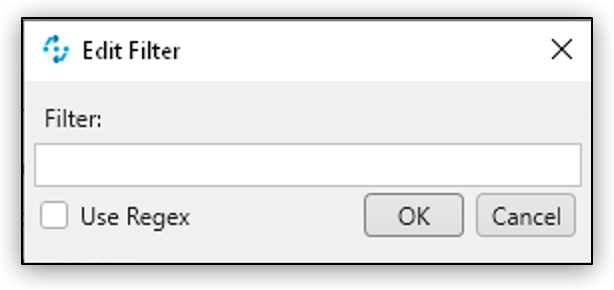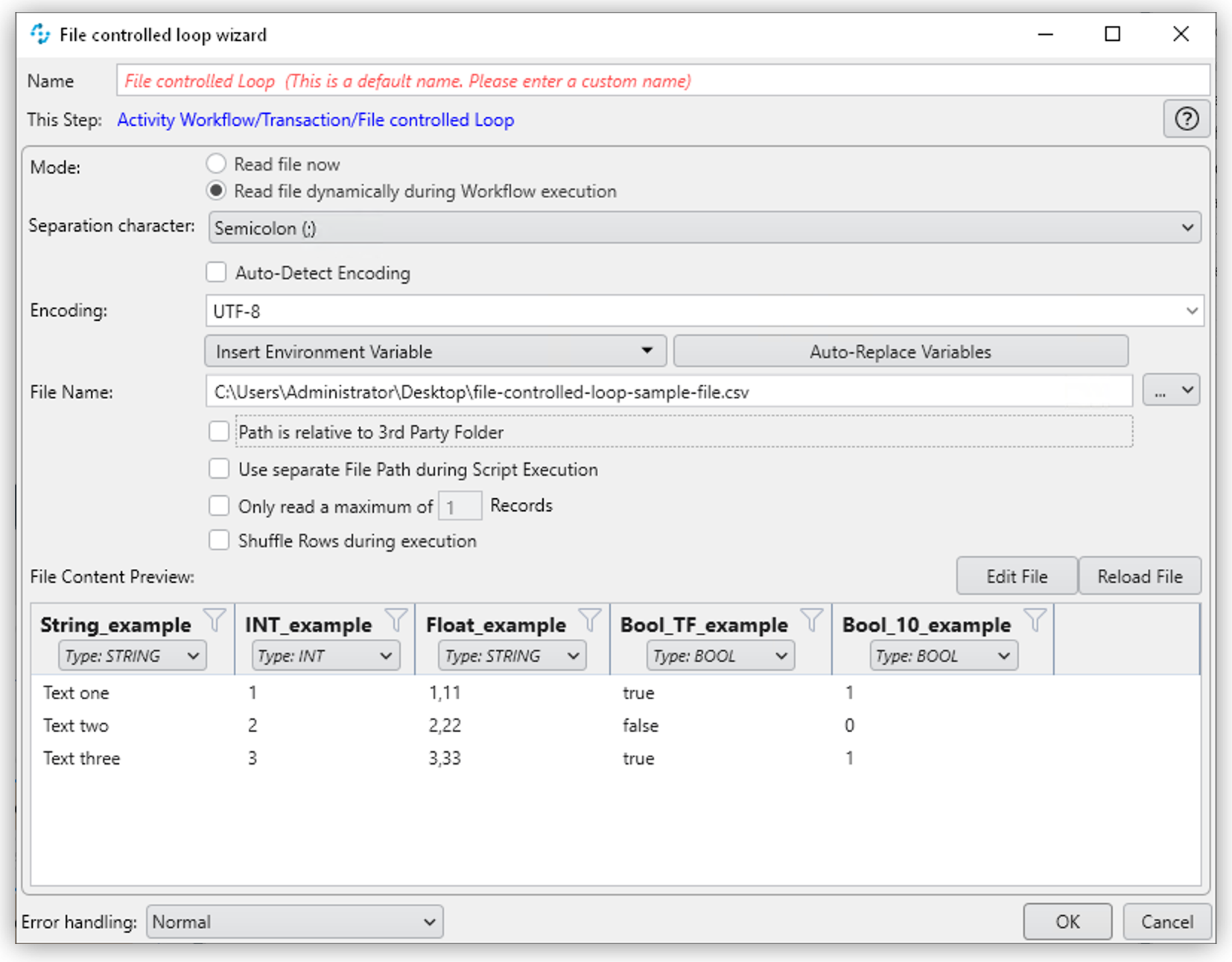
File Controlled Loop
This Flow Control Element reads data from a CSV file and makes the data available as variables, whereby each column represents one variable. During execution, File Controlled Loop iterates over each row of data and runs through all the content of each row individually.
Ensure you use a valid and well-formatted CSV file where all rows have the same number of columns separated by the selected separation character. RPA Builder selects the semicolon (;) as the separation character when it converts existing workflows created with earlier versions. If the file has an incorrect format, File Controlled Loop cannot read the file.
The first line of the file is considered the header line. File Controlled Loop uses these headers as variable names and not as actual variable values.
Properties
-
External File
-
Import Filename
Full path of the file to import.
-
Relative to 3rd Party Folder
Specifies if the path of the file to load is relative to the 3rd party folder.
-
Separation character
Specifies the character to use as a column separator when reading the CSV file.
-
Shuffle
Shuffles the data rows during execution.
-
-
Miscellaneous
-
Iteration Count
If Limit iterations is selected, this property specifies the maximum iterations the loop does. Only applicable when the file is imported at runtime.
-
Limit iterations
Decides if the iteration count is limited.
-
Only applicable when the file is imported at runtime. * *Separate File Path for Execution
+ When Use separate File Path for Execution is selected, File Controlled Loop reads the file from this path instead of the path given in Import Filename. Only applicable when the file is imported at runtime. * *Use separate File Path for Execution
+ Select this setting to load the file from a different path during execution. Useful if you want to read the file from a network location. Only applicable when the file is imported at runtime. * *Use type string only
+ Converts all data to type String during runtime. In the wizard, you can convert the data per column.
Outbound Variables
The action steps inside File Controlled Loop return the respective column contents as variables.
The names of the variables follow the pattern <action step name>.<column name>.
Wizard
The wizard enables you to select whether to import the file at the moment or during execution, the separation character, and the document’s encoding, including Shift-JIS and EUC-JP for Japanese support.
Depending on the read mode you select, the wizard changes. The main difference between the two modes is that when you import the file at design time, you can use its variables in timers, and the data is fixed. If you import the file during execution, you can read the file from anywhere, including network locations, which enables you to alter the data without modifying the Workflow at all (however, you cannot use the variables within timer names).
If you switch between the two modes you lose all defined variable mappings.
Importing the file during execution enables you to use variables within the column filters. However, the wizard deletes any filters that contain variables if you switch modes.
Importing a File at Design Time
When you select Read file now, the wizard shows the following configuration options:

Click Import File to select the file to import. RPA Builder then reads and analyzes the file and displays a content preview in the File Content Preview section of the wizard.
The File Content Preview section enables you to apply filters to each column by clicking the Filter button (![]() ). When you enter text in the Filter field, the preview filters out all rows that do not contain the specified text.
). When you enter text in the Filter field, the preview filters out all rows that do not contain the specified text.

Select Use Regex to use a regular expression instead of plain text when applying filters.
Use the drop-down menu next to each column name to change the type of the column content.
Importing a File During Execution
When you select Read file dynamically during Workflow execution, the wizard shows the following configuration options:

Click […] next to the File Name field to specify the file path, select and copy the file to the 3rd Party folder, or open the 3rd Party folder.
Select Use separate File Path during Script Execution to specify an absolute path to read the file from. Use this option when the file’s location differs in the system that executes the automation and the system where you build the Workflow.
Select Only read a maximum of <n> Records and specify a number to limit the maximum number of rows to read from the file.



